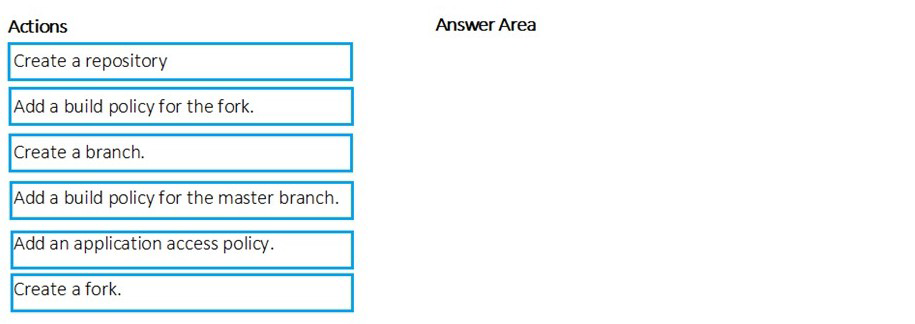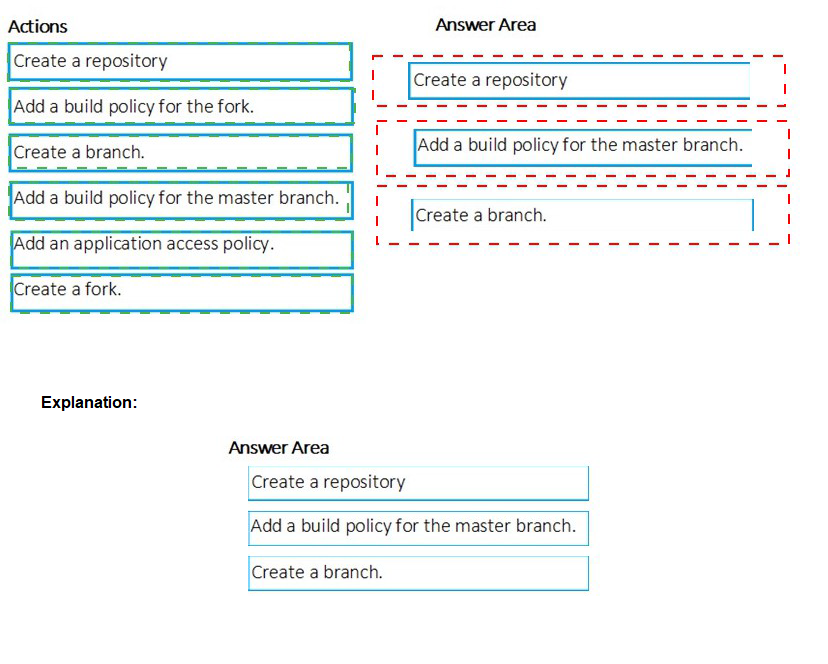
- Email support@dumps4free.com

Topic 2: Contoso Case Study: 2
Overview
Existing Environment
Contoso, Ltd. is a manufacturing company that has a main office in Chicago.
Requirements
Contoso plans to improve its IT development and operations processes implementing Azue
DevOps principles. Contoso has an Azure subscription and creates an Azure DevOPs
organization.
The Azure DevOps organization includes:
The Docker extension
A deployment pool named Pool7 that contains 10 Azure virtual machines that run
Windows Server 2016.
The Azure subscription contains an Azure Automation account.
Planned Changes
Contoso plans to create projects in Azure DevOps as shown in the following table.

Technical Requirements
Contoso identities the following technical requirements:
• Implement build agents rot Project 1.
• Whenever possible, use Azure resources
•Avoid using deprecated technologies
• Implement a code flow strategy for Project2 that will:
•Enable Team 2 to submit pull requests for Project2.
• Enable Team 2 to work independently on changes to a copy of Project?
• Ensure that any intermediary changes performed by Tram2 on a copy of Project2 will be
subject to the same restrictions as the ones defied in the build policy of Project2.
• Whenever possible. Implement automation and minimize administrative effort.
• Implement Protect3, Project5, Project6, and Project7 based on the planned changes.
• Implement Project4 and configure the project to push Docker images to Azure Container
Reentry.
A. Run the Register-AzureRmAutomationDscNode Azure Powershell cmdlet.
B. Modify the ConfigurationMode property of the Local Configuration Manager (LCM).
C. Install PowerShell Core.
D. Modify the RefreshMode property of the Local Configuration Manager (LCM).
Explanation:
The Register-AzureRmAutomationDscNode cmdlet registers an Azure virtual machine as an APS Desired State Configuration (DSC) node in an Azure Automation account.
Scenario: The Azure DevOps organization includes:
The Docker extension
A deployment pool named Pool7 that contains 10 Azure virtual machines that run Windows Server 2016

You are developing an Azure Pipelines pipeline. You need to configure a check in the pipeline that will query Azure Boards to ensure that there are no active work item issues before the pipeline deploys a build to production. Which type of check should you implement?
A. post-deployment approvals
B. manual validations
C. pre-deployment gates
D. pre-deployment approvals
You need to implement the code flow strategy for Project2 in Azure DevOps.
Which three actions should you perform in sequence? To answer, move the appropriate actions from the list of actions to the answer area and arrange them in the correct order.


You plan to share packages that you wrote, tested, validated, and deployed by using Azure Artifacts. You need to release multiple builds of each package by using a single feed. The solution must limit the release of packages that are in development. What should you use?
A. global symbols
B. local symbols
C. upstream sources
D. views
Views enable you to share subsets of the NuGet, npm, Maven, Python and Universal Packages package-versions in your feed with consumers. A common use for views is to share package versions that have been tested, validated, or deployed but hold back packages still under development and packages that didn’t meet a quality bar.
In Azure DevOps, you create Project3.
You need to meet the requirements of the project. What should you do first?
A. From Azure DevOps, create a service endpoint.
B. From Sonar Qube, obtain an authentication token.
C. From Azure DevOps, modify the build definition.
D. From Sonar Qube , create a project.
Explanation: The first thing to do is to declare your Sonar Qube server as a service endpoint in your VSTS/DevOps project settings.
| Page 14 out of 98 Pages |
| Previous |